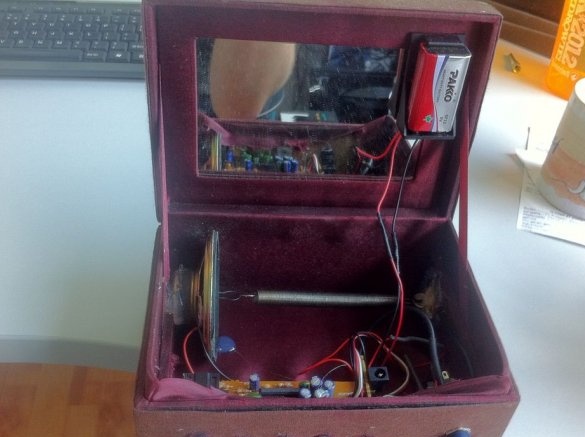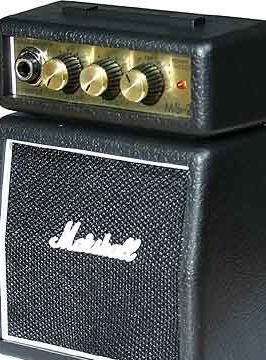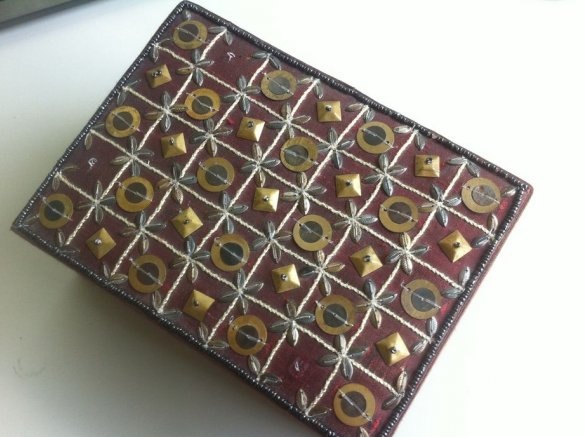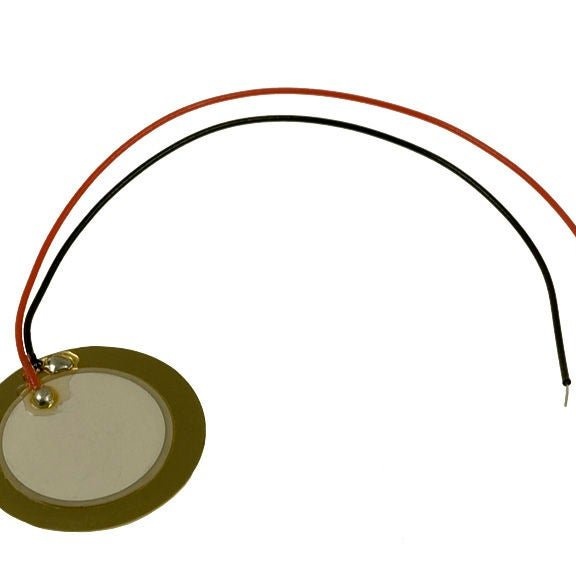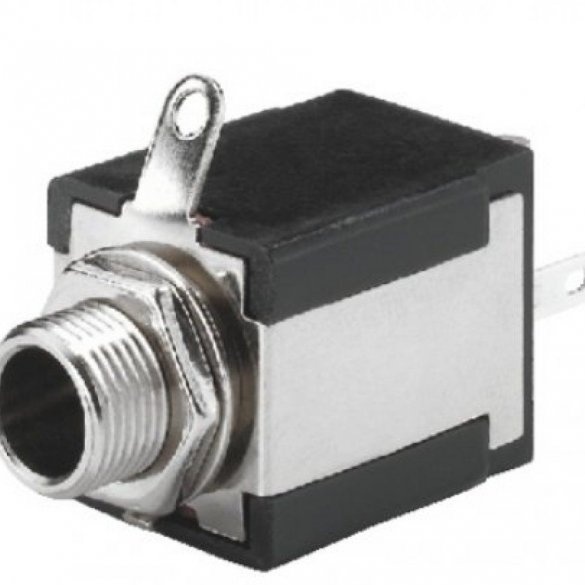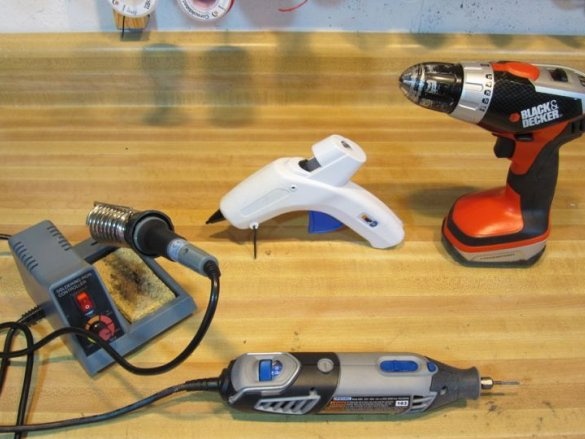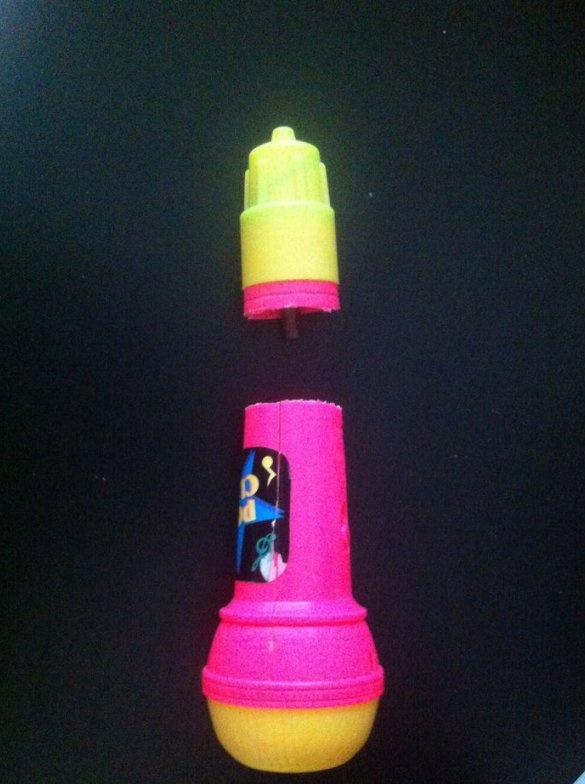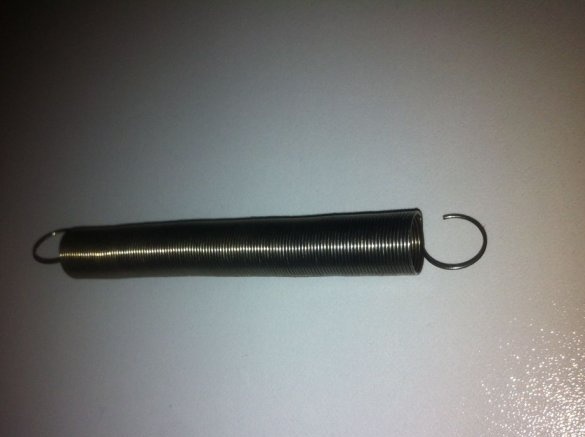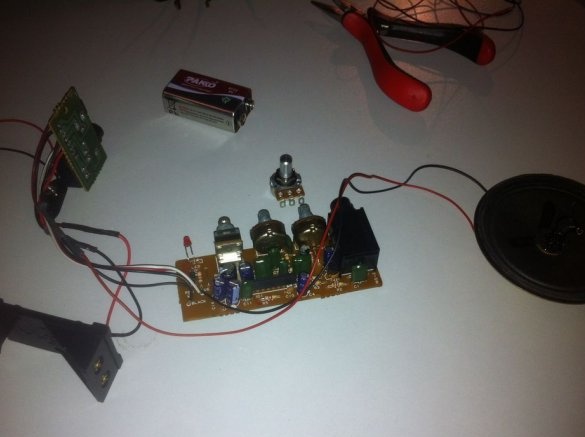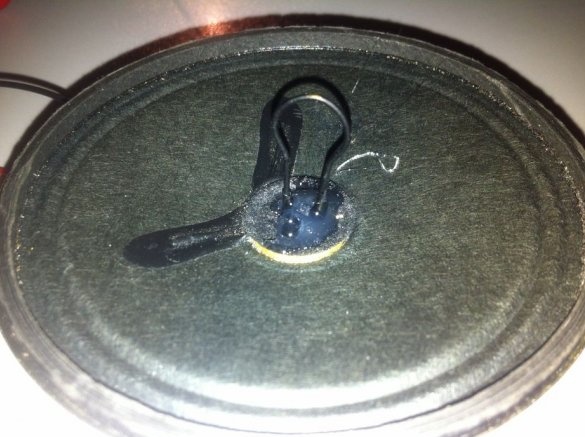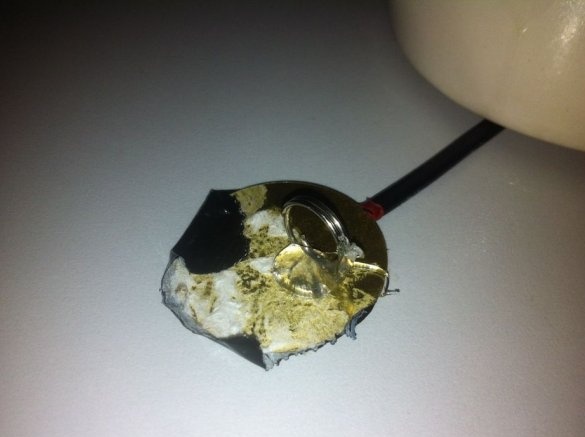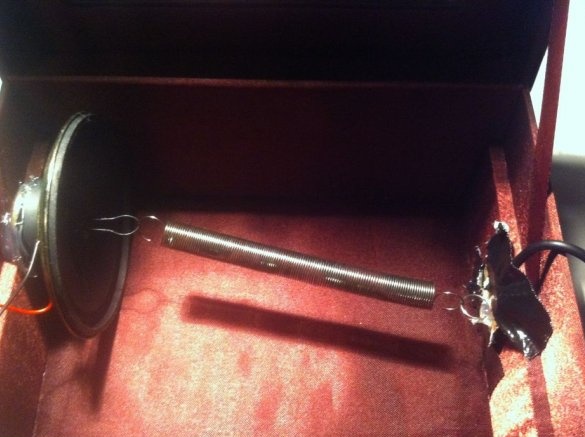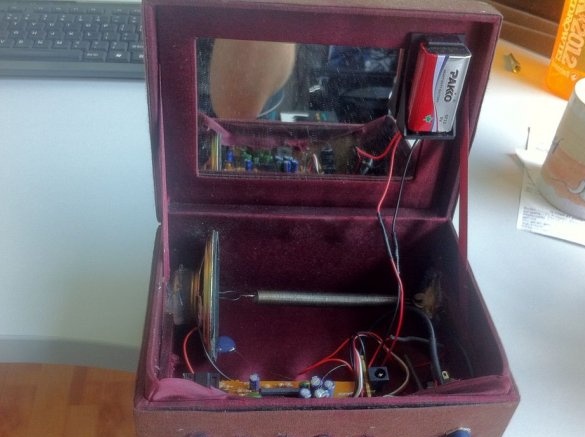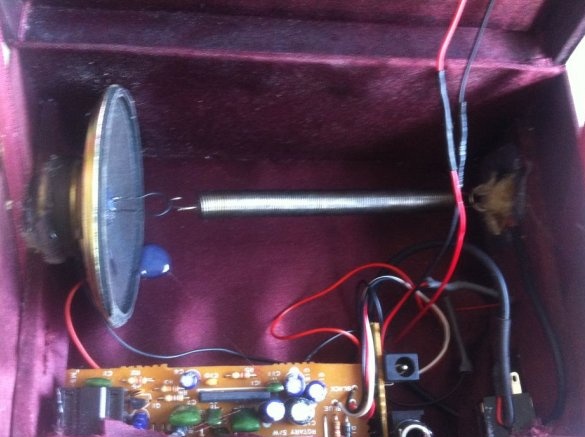Spring reverbs today coexist peacefully with digital ones, just as acoustic and adapted musical instruments coexist peacefully with analog and digital synthesizers and other EMPs. Because they sound different and do not replace each other. The author of Instructables under the nickname markijzerman used a spring from a fairly common toy "microphone with an echo effect" in a makeshift spring reverb - the simplest spring reverb without a power source, which gives an aspiring singer the ability to hear his own voice with a delay, thereby allowing him to put it better. The toy looks like this:
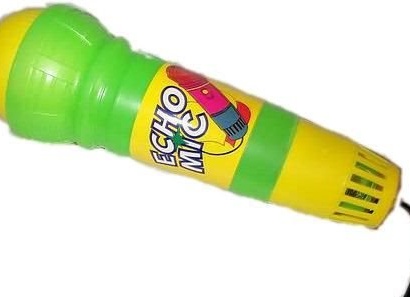
Also required: a low-power battery pack, some kind of hard box, in this case, for storing jewelry or something like that, a piezo emitter, paper clips, jacks, tools.
From the toy, the master removes the main component - the spring:
And from the combo - everything that is in the case. Then in this case it will be possible to assemble some column.
Bends the spring holders from paper clips and glues them with hot-melt adhesive to the diffuser of the dynamic head of the combo and to the membrane of the newly added piezo emitter:
Connects the piezo emitter to the jack:
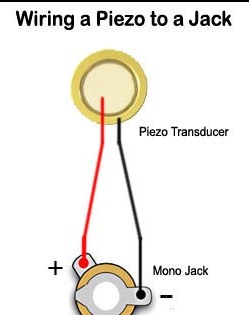
Glues the dynamic head and piezo-emitter to the inner walls of the box with hot melt as shown in the following photo:
It checks everything beforehand by connecting a signal source and a piezo emitter to the mixer inputs, and the mixer output to the combo input. After making sure that the reverb is working, he puts a combo board in the box so that the controls, LED and connector go out through pre-drilled holes, well, everything else is fixed:
It is better, of course, to first remove the fabric and the mirror. A fabric is required for damping something, a mirror - in experiments on geometric optics. And outside, remove all the decorative elements from the box and paint it in dark gray. Well, the springs in homemade reverbs use a variety of different. For example, quite often another toy is used - “slinky”, both in metal and plastic versions.The case is large, but the delay is longer.

